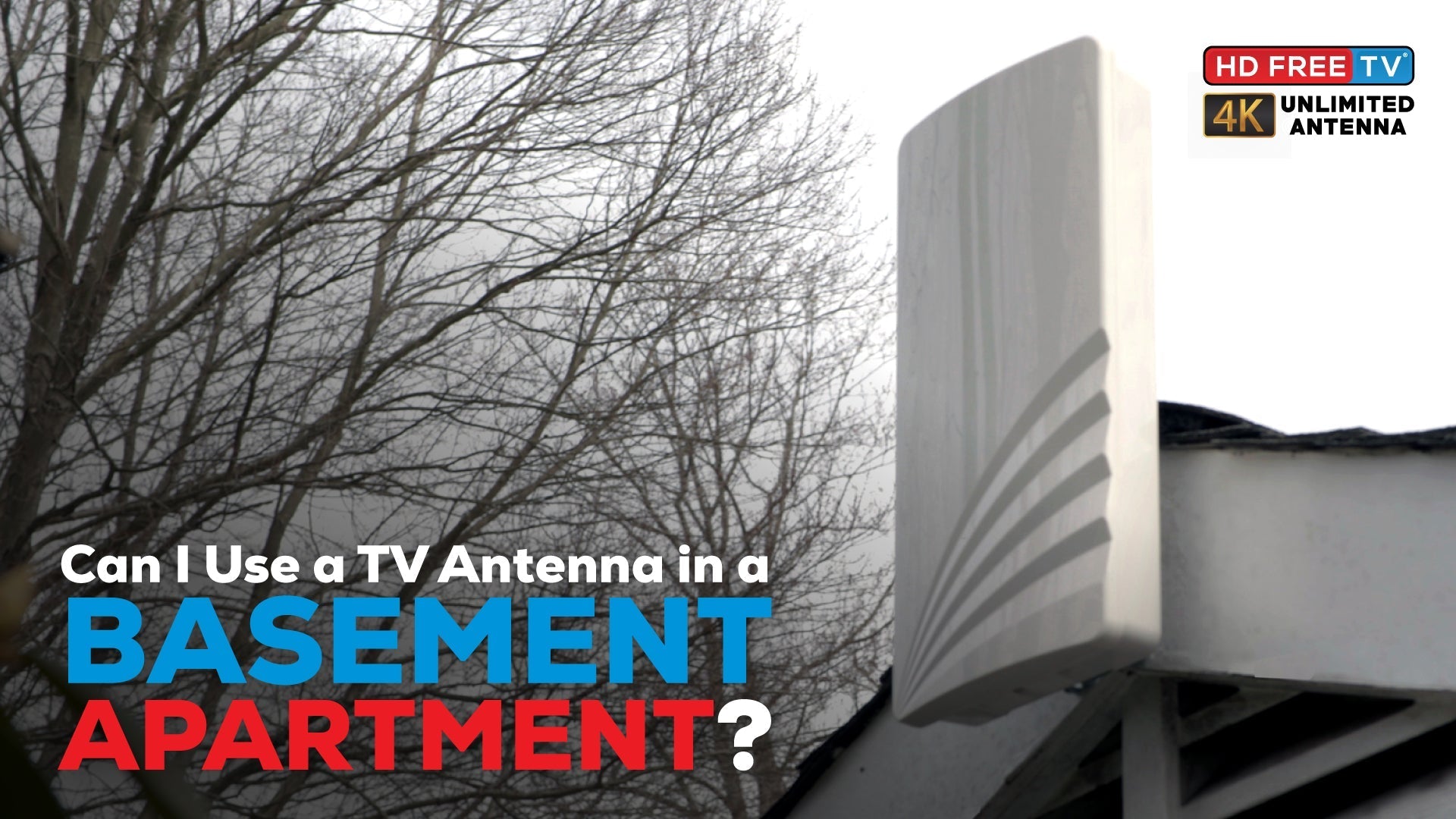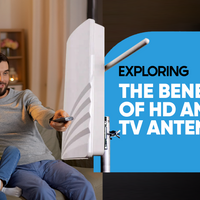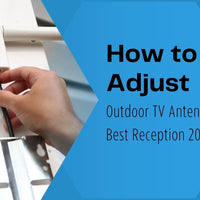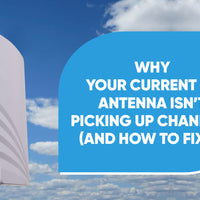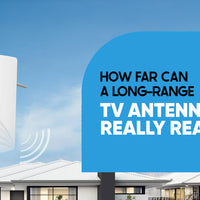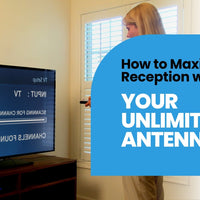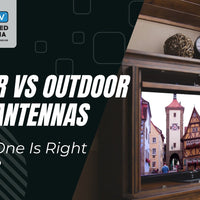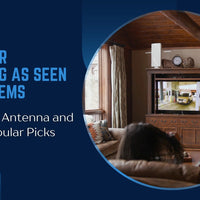Summary:
-
Thick walls and underground depth weaken TV signals, requiring elevated antenna positioning.
-
Amplified antennas near glass capture clearer broadcasts, maximizing channel access.
-
Mounting outside with a coaxial cable overcomes basement signal challenges effectively.
-
Amplifiers strengthen broadcasts but require testing to avoid noise interference.
-
AntennaWeb.org guides antenna aiming for optimal channel variety and clarity.
Basement apartments create a tough environment for TV antennas due to their structural and environmental constraints. Dense concrete or steel walls act as a shield, blocking most broadcast signals in a manner akin to a Faraday cage, which disrupts the flow of radio waves needed for clear reception.
However, the underground location further diminishes signal strength, as layers of soil, rock, and building materials absorb incoming broadcasts, leaving only faint signals to reach your TV. Household systems like HVAC units, water heaters, or electrical wiring introduce additional interference, causing static, pixelation, or dropped channels.
To overcome these hurdles, careful antenna placement and equipment selection are essential. Opting for solutions that elevate the antenna or amplify signals can transform a basement into a hub for free HDTV, delivering local channels like ABC, CBS, and FOX in vibrant high-definition without costly subscriptions.
Practical Workarounds
Despite the challenges of basement environments, several strategies can ensure reliable TV reception. By leveraging smart positioning, advanced technology, and existing building infrastructure, you can access a wide array of free channels, from news and sports to movies, without relying on cable or satellite services.
Window Placement
Windows provide the best opportunity for signal reception in a basement, as they allow broadcasts to bypass thick walls. Position an amplified antenna as close to the glass as possible, ideally aimed toward broadcast towers to capture the strongest signals available. Ensure the antenna is free from obstructions like furniture, curtains, or metal objects such as radiators, which can reflect or weaken signals.
Mounting options like suction cups or adhesive strips can secure the antenna to the window, keeping it elevated and unobstructed. Periodically adjust the antenna’s angle or height to optimize reception, as slight shifts can unlock additional channels or improve picture quality, ensuring a seamless viewing experience for local networks and subchannels.
Signal Boosters
Amplified antennas with built-in signal boosters are a valuable tool for basements, as they enhance faint signals that struggle to penetrate underground spaces. These devices boost the strength of incoming broadcasts, making it easier to access distant towers, particularly in suburban or rural areas where signals may be weaker.
To avoid amplifying background noise, which can lead to fuzzy or distorted channels, test the antenna with the booster turned on and off during channel scans. High-quality amplifiers, designed with precision through processes like InvenTel’s Commercial Production, ensure consistent performance.
Cable Sharing
Many apartment buildings feature pre-installed coaxial wiring that can connect an antenna placed in a higher location, such as a rooftop or common area, to your basement TV. If your building’s infrastructure supports it, plug the antenna into a coax jack to deliver signals directly to your apartment.
This approach requires checking with building management to confirm wiring compatibility and access permissions, but it can provide a robust solution for tenants in multi-story complexes. Using a high-quality coaxial cable minimizes signal loss over long distances, ensuring channels remain crisp and reliable.
Testing and Tweaking Your Setup
Once your antenna is installed, regular testing and adjustments are crucial for maintaining optimal reception. Run a channel scan through your TV’s menu immediately after setup to identify available broadcasts, and repeat this process every few weeks to detect new or shifting channels.
Adjust the antenna’s position by rotating it slightly or moving it to different spots near the window, as small changes can significantly improve signal strength. If using a booster, toggle it during scans to prevent overloading strong signals, which can cause distortion.
Keep a record of which channels appear at different positions to identify the best setup, ensuring consistent access to a broad range of programming in high-definition quality.
Pro Tips & Tools
To maximize your antenna’s performance, use these expert strategies to fine-tune your setup and avoid common mistakes, ensuring a seamless and high-quality viewing experience.
Signal Mapping
Visit AntennaWeb.org to locate nearby broadcast towers and assess signal availability in your area. This tool provides detailed maps showing tower directions and distances, enabling you to aim your antenna accurately for maximum channel pickup.
Check the site periodically for updates, as tower locations or broadcast frequencies may shift, impacting reception. Accurate aiming ensures access to a wide range of channels, from local networks to subchannels, enhancing your entertainment options without subscriptions.
Avoid These
Unamplified “rabbit ear” antennas are unsuitable for basements, as they lack the power to penetrate thick walls or overcome interference.
Similarly, avoid placing the antenna behind TVs, appliances, or metal objects like filing cabinets, which can disrupt signals and lead to pixelated or dropped channels. Positioning the antenna in an open, elevated spot, free from obstructions, is critical for consistent performance and clear reception across all available broadcasts.
Consult Experts
For complex setups, such as multi-story buildings with intricate wiring or outdoor installations requiring roof access, antenna specialists can provide tailored solutions. They assess your building’s layout, recommend equipment suited to your location, and ensure proper installation for optimal results.
This is particularly valuable in urban areas with dense construction or rural regions with distant towers, where standard setups may not suffice.
Conclusion
Accessing free HDTV in a basement apartment is entirely achievable with the right strategy, starting with one key rule: keep the antenna out of the basement itself.
Use AntennaWeb.org to pinpoint broadcast towers, then position an amplified antenna near a window, adjusting its placement to capture the strongest signals.
If reception remains weak, opt for an outdoor antenna, running a coaxial cable to your TV for superior performance. You can also choose Unlimited Antenna, which offers an ideal solution with its amplified, multi-directional design and 100-mile range, available at trusted retailers like Best Buy.

